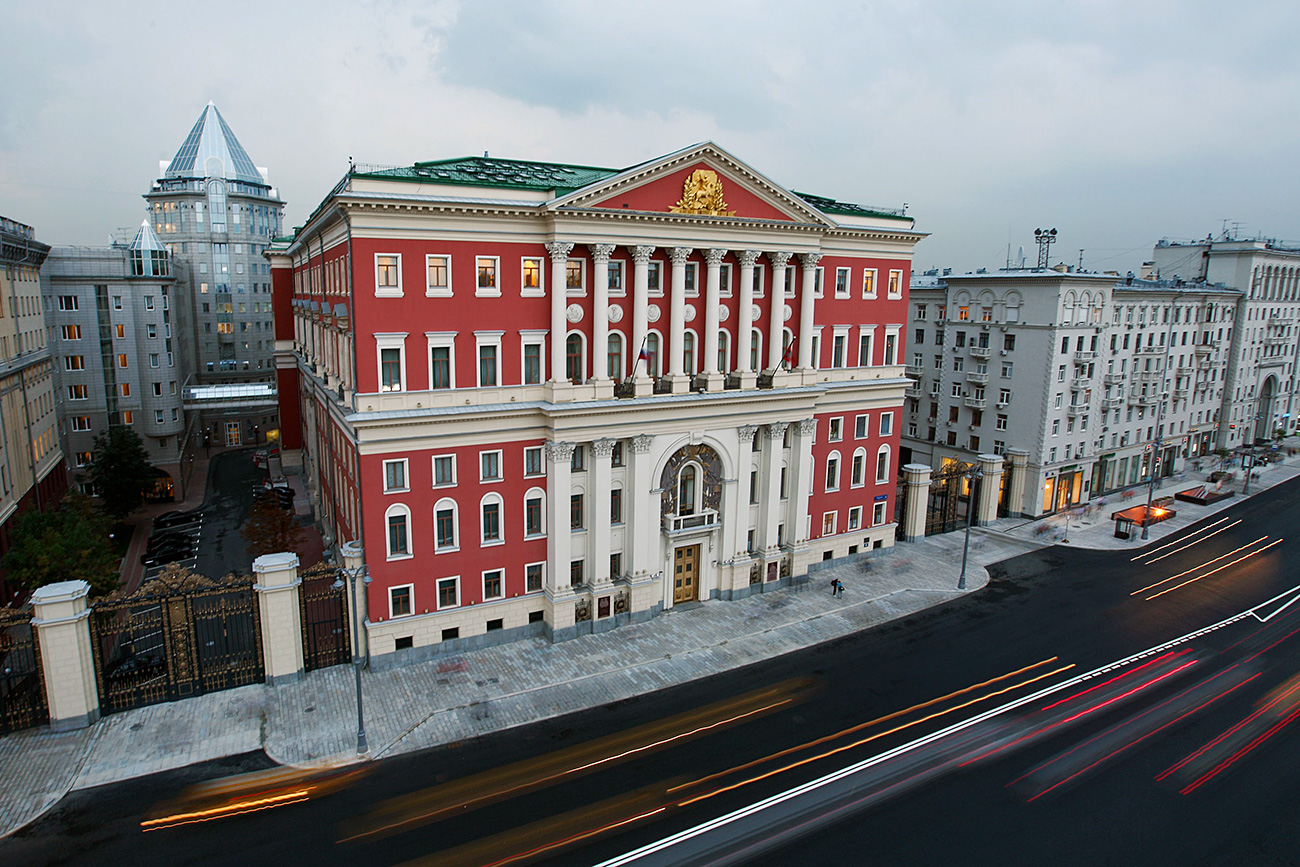
"After St. Petersburg became Russia's capital the tsars continued to be crowned in the Kremlin and it was along Tverskaya that they entered their old residence."
Moskva AgencyTverskaya is one of the oldest streets in Moscow. In the 12th century there was a road here that led to Tver (about 200 km northwest of Moscow). Thus the name. It was separated from the Kremlin by the Neglinnaya River, which was drained during the beginning of the 19th century, and the bridge over the river led directly to Red Square.
After St. Petersburg became Russia's capital the tsars continued to be crowned in the Kremlin and it was along Tverskaya that they entered their old residence. Thanks to these processions in the 18th century, Tverskaya became the city's principal avenue, preserving its status to this day.
RBTH highlights the most interesting landmarks on the historic street, the main artery leading to Russia's politcal heart.
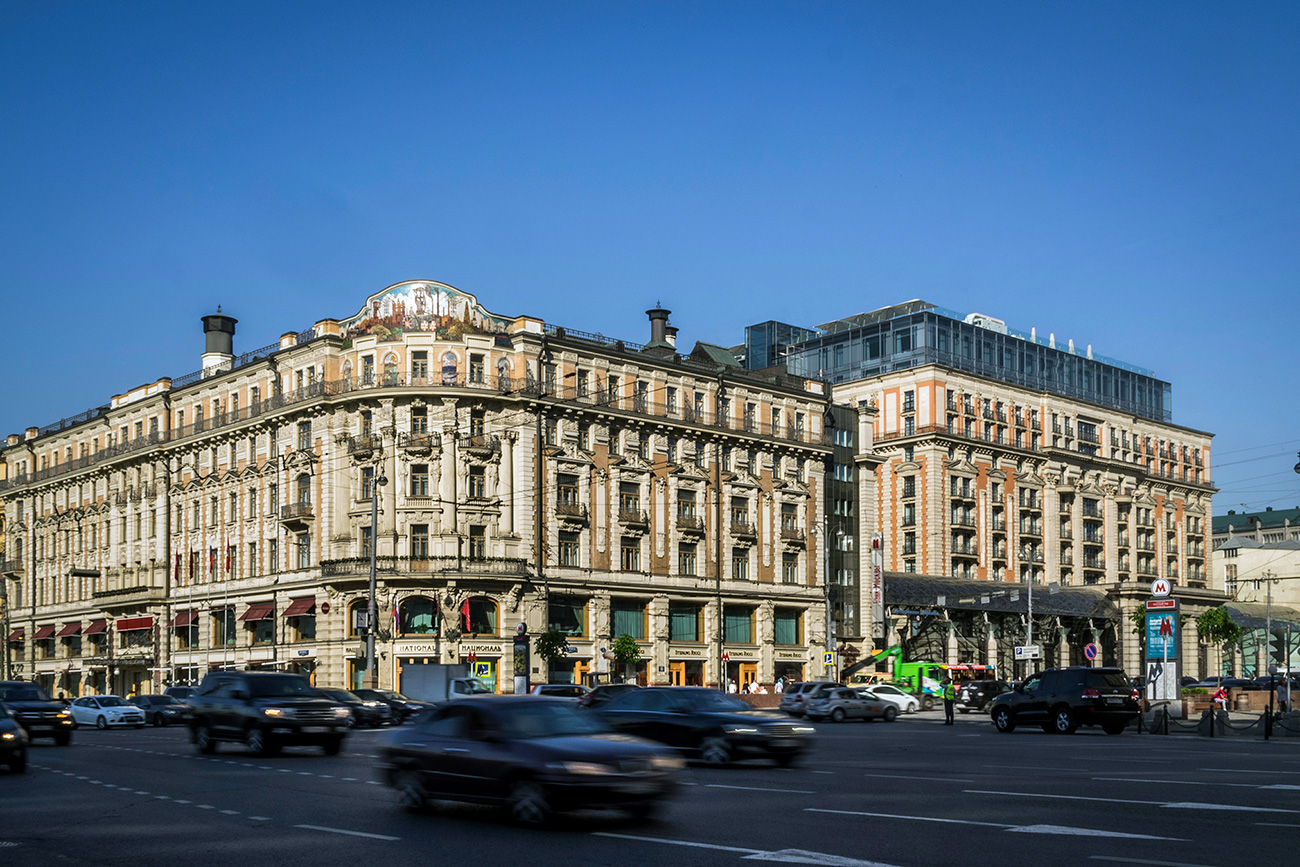 "The hotel opened its doors in 1903 and despite the fact that staying there was by no means cheap, it was flooded with guests." Source: Konstantin Kokoshkin/Global Look Press
"The hotel opened its doors in 1903 and despite the fact that staying there was by no means cheap, it was flooded with guests." Source: Konstantin Kokoshkin/Global Look Press
Two buildings flank Tverskaya Avenue as you enter it from the side of the Kremlin, built only 30 years apart. Yet, their aspects are as different as the historical epochs they embody. On the left (if you stand with your back to the Kremlin) is the National, one of Russia's most luxurious hotels, erected at the beginning of the 20th century. On the right is the symbol of Soviet power, the Soviet of Labor and Defense building, which today houses the State Duma.
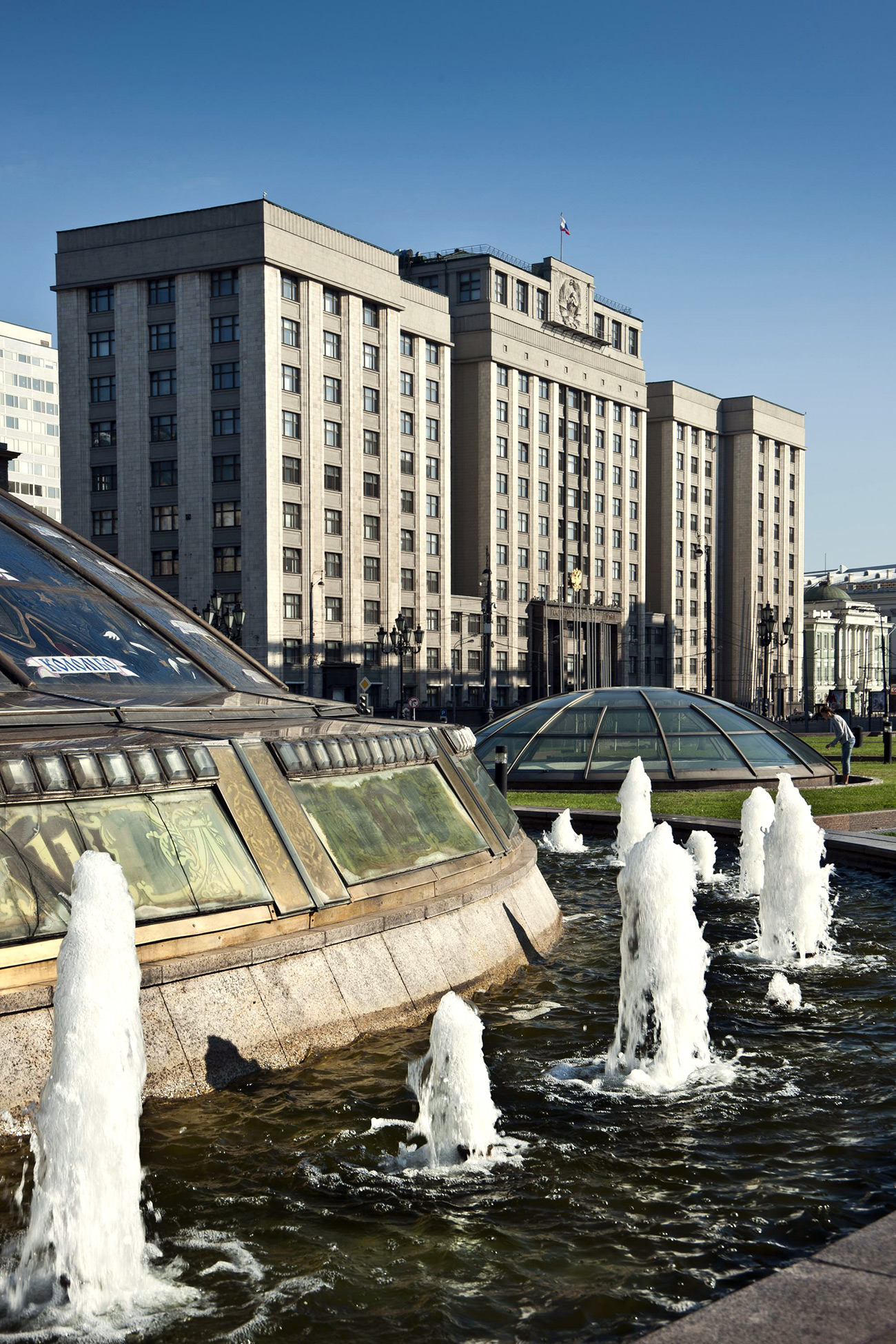 "Two buildings flank Tverskaya Avenue as you enter it from the side of the Kremlin, built only 30 years apart. Yet, their aspects are as different as the historical epochs they embody." Photo: The building of the State Duma/Konstantin Kokoshkin/Global Look Press
"Two buildings flank Tverskaya Avenue as you enter it from the side of the Kremlin, built only 30 years apart. Yet, their aspects are as different as the historical epochs they embody." Photo: The building of the State Duma/Konstantin Kokoshkin/Global Look Press
The hotel opened its doors in 1903 and despite the fact that staying there was by no means cheap, it was flooded with guests. Besides the excellent location and sumptuous interiors, it was also technologically advanced: It was equipped with electric elevators, telephones, and steam heating. It hosted important industrialists and foreign diplomats, as well as renowned representatives from the bohemian community - from writer Ivan Bunin to ballerina Anna Pavlova. After the revolution even revolutionary leader Vladimir Lenin lived here before he moved to the Kremlin.
The building opposite the hotel is a symbol of the USSR. The monumental sight with constructivist facades was erected in 1932 to 1935 and became a model for Soviet government buildings. A 1937 guidebook called it "one of the most beautiful buildings of the new Moscow."
 "The gable roof, the towers in the corners, the multi-chromatic tiles on the façade - this apartment block, which belonged to the Savvino-Storozhevsky Monastery, was built at the beginning of the 20th century in the fashionable pseudo-Russian style." Source: Legion Media
"The gable roof, the towers in the corners, the multi-chromatic tiles on the façade - this apartment block, which belonged to the Savvino-Storozhevsky Monastery, was built at the beginning of the 20th century in the fashionable pseudo-Russian style." Source: Legion Media
The building with splendid architecture and a unique destiny is located in the inner courtyard building No. 6. To see it you must go through the arch. The gable roof, the towers in the corners, the multi-chromatic tiles on the façade - this apartment block, which belonged to the Savvino-Storozhevsky Monastery, was built at the beginning of the 20th century in the fashionable pseudo-Russian style. The space inside was rented out as apartments and offices.
In 1939 the building got in the way of a new structure. However, it was not demolished - it was "simply" moved 50 meters inside the block. This was common practice in Moscow at the time. About 70 buildings were moved and Savvinskoye Court was the most complicated and the heaviest - it weighed 23,000 tons. The "move" was conducted without relocating the tenants. It happened over the course of one night, which was preceded by several months of preparation.
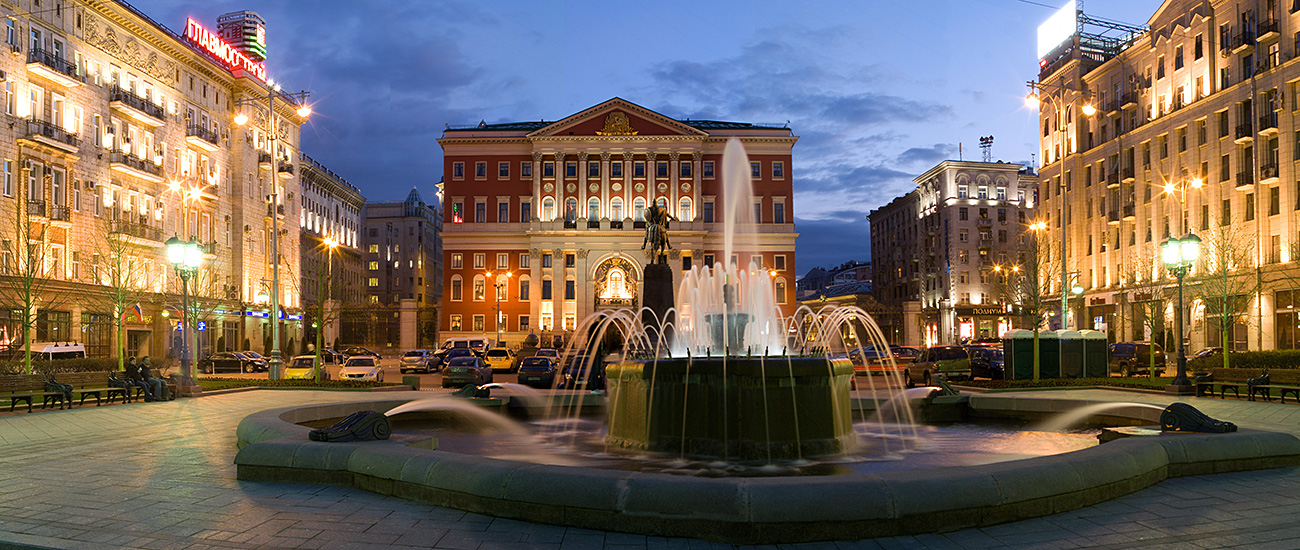 "The red building with white columns was once two times smaller and Muscovites would attend balls that took place here." Source: Konstantin Kokoshkin/Global Look Press
"The red building with white columns was once two times smaller and Muscovites would attend balls that took place here." Source: Konstantin Kokoshkin/Global Look Press
The red building with white columns was once two times smaller and Muscovites would attend balls that took place here. It was built in 1782 by architect Matvey Kazakov for Governor-General Chernyshev. After the death of its first owner the building was purchased by the state and ever since it’s been the official residence of Moscow mayors. In the 1930s, during the expansion of Tverskaya Avenue, the building was moved by a total of 13.5 meters, but it happened in a record 41 minutes. Two more floors were also added.
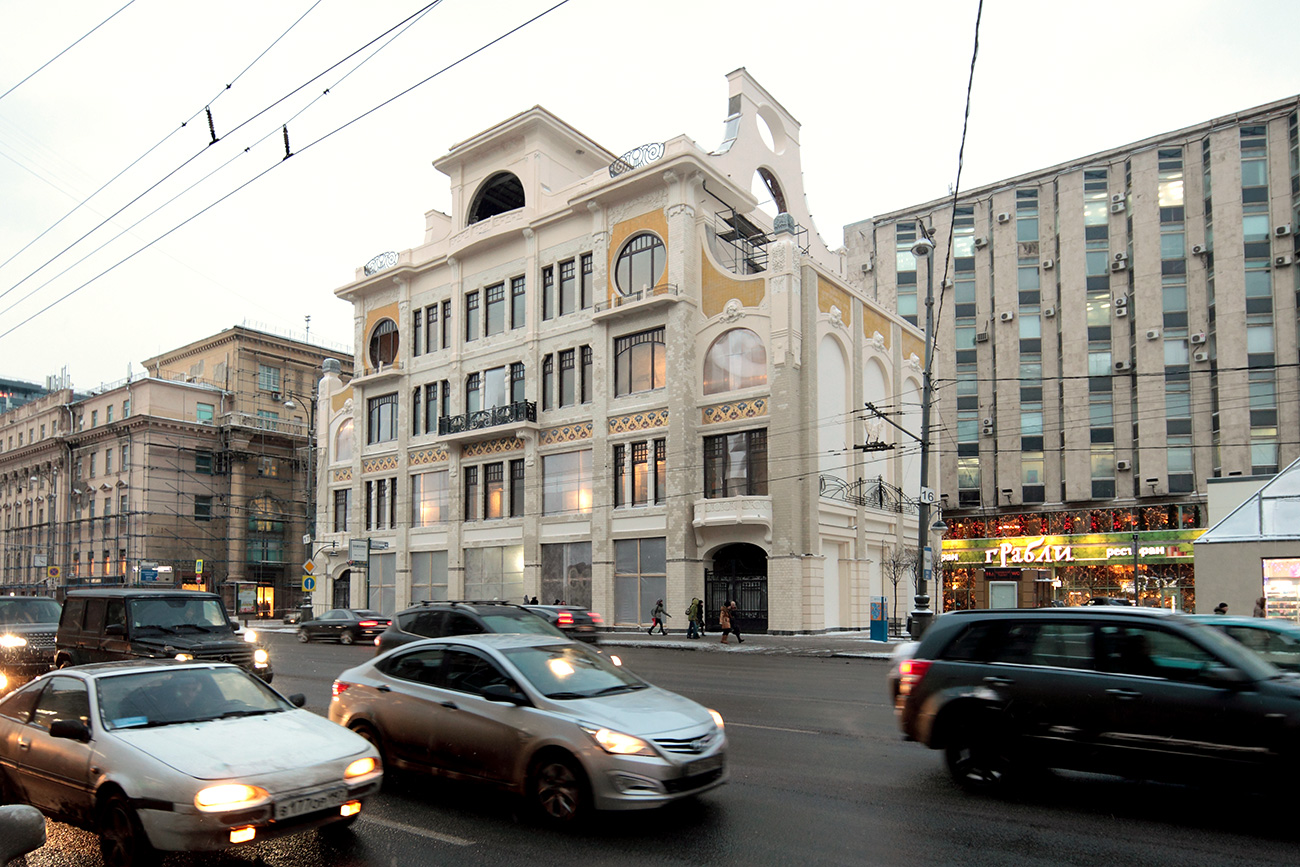 "This building housed the editorial department of a newspaper, Russkoye Slovo, and paradoxically, after the revolution it was used as the editorial department of the newspaper Izvestia, one of the flagships of Soviet media." Legion Media
"This building housed the editorial department of a newspaper, Russkoye Slovo, and paradoxically, after the revolution it was used as the editorial department of the newspaper Izvestia, one of the flagships of Soviet media." Legion Media
This is one of the finest examples of the Art Nouveau style in Moscow. At the beginning of the 20th century the house belonged to Ivan Sytin, a famous book publisher. It housed the editorial department of his newspaper, Russkoye Slovo, and paradoxically, after the revolution it was used as the editorial department of the newspaper Izvestia, one of the flagships of Soviet media, until the publication received its own office. In 1979, the building, covering Izvestia's new constructivist annexes, was moved 30 meters to the side. Fortunately, it preserved its refined décor.
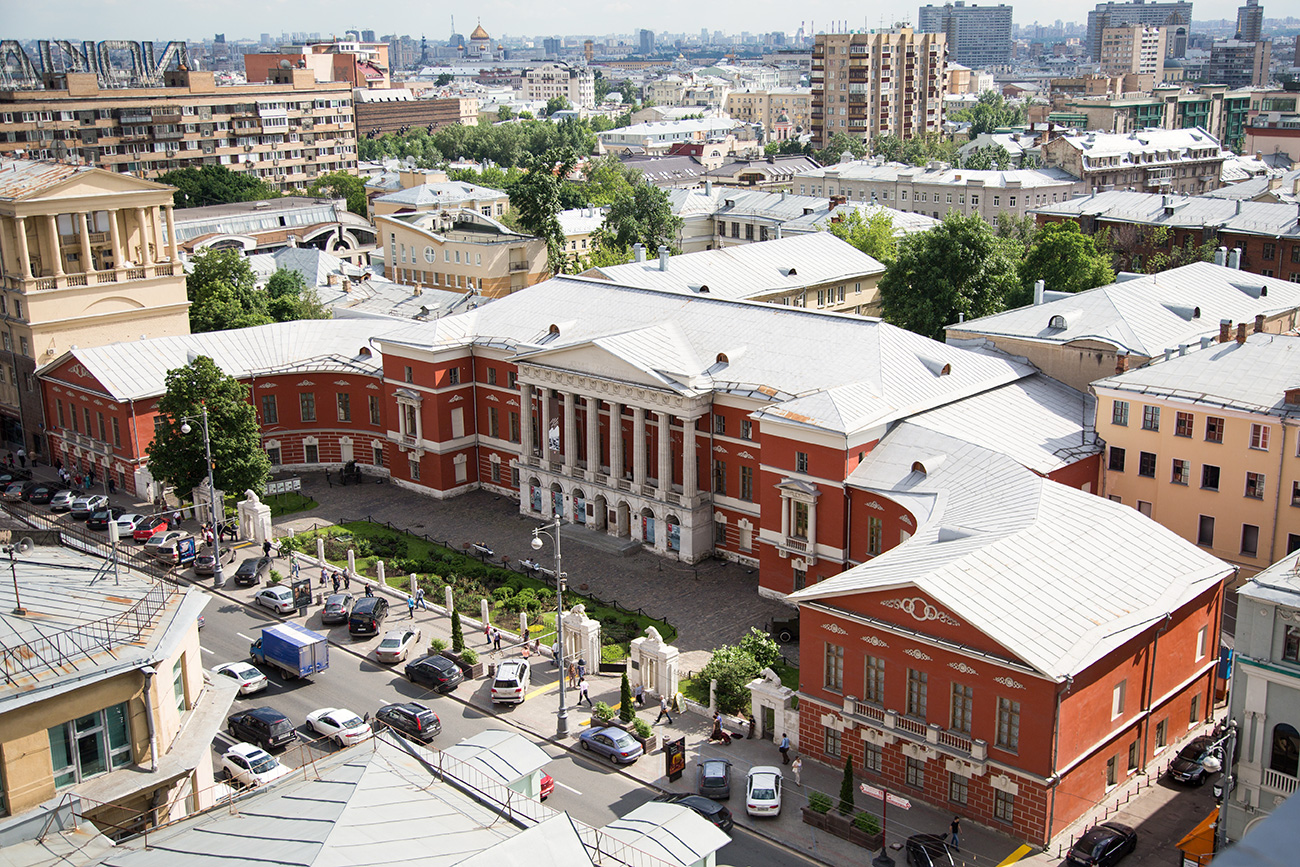 "A vivid period for the building began in 1831, when the English Club transferred here. All Moscow playboys dreamt of becoming members of this elitist male society." Source: Legion Media
"A vivid period for the building began in 1831, when the English Club transferred here. All Moscow playboys dreamt of becoming members of this elitist male society." Source: Legion Media
This is the only classical manor house on the avenue not to be distorted by later reconstruction. The manor with the columned portico, front yard, and stone wall and lions was built at the end of the 18th century. However, it received its final addition after the Napoleonic invasion and subsequent fire of 1812. A vivid period for the building began in 1831, when the English Club transferred here. All Moscow playboys dreamt of becoming members of this elitist male society. The club's motto was "Concordia et laetitia" ("Accord and amusement"). The club organized lavish lunches, the members played cards, and debated politics. It had 400 members and about 1,000 candidates were always on the waiting list. New members were accepted only upon recommendation and a secret vote. Today the building houses the Museum of Modern Russian History.
If using any of Russia Beyond's content, partly or in full, always provide an active hyperlink to the original material.
Subscribe
to our newsletter!
Get the week's best stories straight to your inbox